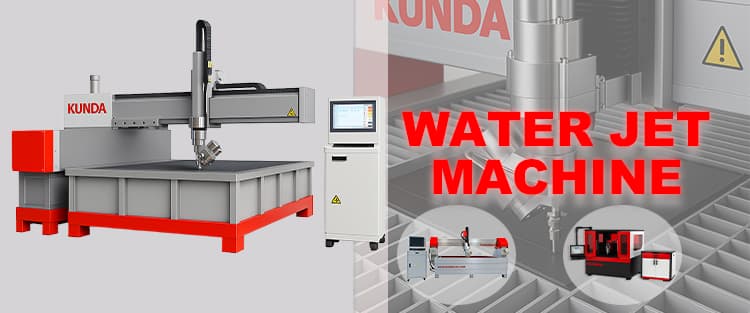Company news
Is Waterjet Cutting an Eco-Friendly Manufacturing Process?
Is Waterjet Cutting an Eco-Friendly Manufacturing Process?

As the manufacturing world moves toward greener production, more and more companies are asking: Can precision cutting also be environmentally friendly?
The answer is yes — especially when it comes to waterjet cutting.
At KUNDA, we’ve seen how businesses across metal fabrication, stone processing, and even aerospace are switching to WaterJet Cutting Machines not just for precision, but also for sustainability. Let’s explore why this technology is considered one of the most eco-friendly manufacturing processes today.
1. No Heat, No Pollution
Unlike laser or plasma cutting, waterjet cutting is a cold cutting process. It doesn’t burn, melt, or release harmful fumes.
There are no heat-affected zones, no toxic gases, and no risk of micro-pollution. The process uses only high-pressure water — sometimes mixed with natural abrasive garnet — to cleanly slice through materials.
This means workers stay safe, the air stays clean, and the factory environment remains healthier.
2. Environmentally Friendly Materials
The main cutting medium in a waterjet cutting machine is water — a renewable and recyclable resource.
The abrasive material, typically natural garnet sand, is also non-toxic and chemically inert, meaning it doesn’t react with other substances or contaminate the environment.
Used abrasive can even be filtered and reused in some systems, reducing waste and cost.
3. Minimal Material Waste
Every drop and every cut matter in sustainable manufacturing.
Because waterjet cutting is incredibly precise — often accurate to within ±0.1 mm — it minimizes material waste.
Unlike saw blades or drills that remove wide kerfs and produce scrap, Abrasive Waterjet Technology ensures almost every part of the raw material is used efficiently.
This is why many industries describe it as a zero-waste cutting method.
4. Recyclable Water and Closed-Loop Systems
Modern CNC Waterjet Cutting Systems can be designed with closed-loop filtration units, allowing the same water to be recycled and reused.
This not only saves water but also aligns perfectly with global sustainability goals.
At KUNDA, our machines can be equipped with advanced water filtration and recycling systems to help customers meet environmental standards while maintaining high productivity.
5. Quiet, Clean, and Safe Operation
Noise and vibration pollution are often overlooked in industrial settings.
Waterjet cutting produces far less noise than plasma or oxy-fuel systems and doesn’t require fumes extraction or additional ventilation.
It’s a cleaner, quieter, and safer working process — for both people and the planet.
Why KUNDA Believes in Sustainable Waterjet Technology
At KUNDA, sustainability isn’t just a buzzword — it’s part of our design philosophy.
Every KUNDA waterjet cutting machine is engineered for energy efficiency, reduced water consumption, and long service life.
We provide:
- Eco-friendly Abrasive Waterjet Systems with reusable filters
- Custom configurations for low-waste production
- Durable pumps and components that reduce replacement frequency
- After-sales support focused on energy-saving upgrades
By choosing KUNDA, manufacturers take a step toward cleaner production and sustainable growth.
So, is waterjet cutting an eco-friendly manufacturing process?
Absolutely. It’s one of the cleanest, safest, and most sustainable cutting methods available today.
With no heat, no toxic emissions, and minimal waste, waterjet technology represents the future of responsible manufacturing — and KUNDA is proud to help industries around the world make that future a reality.





